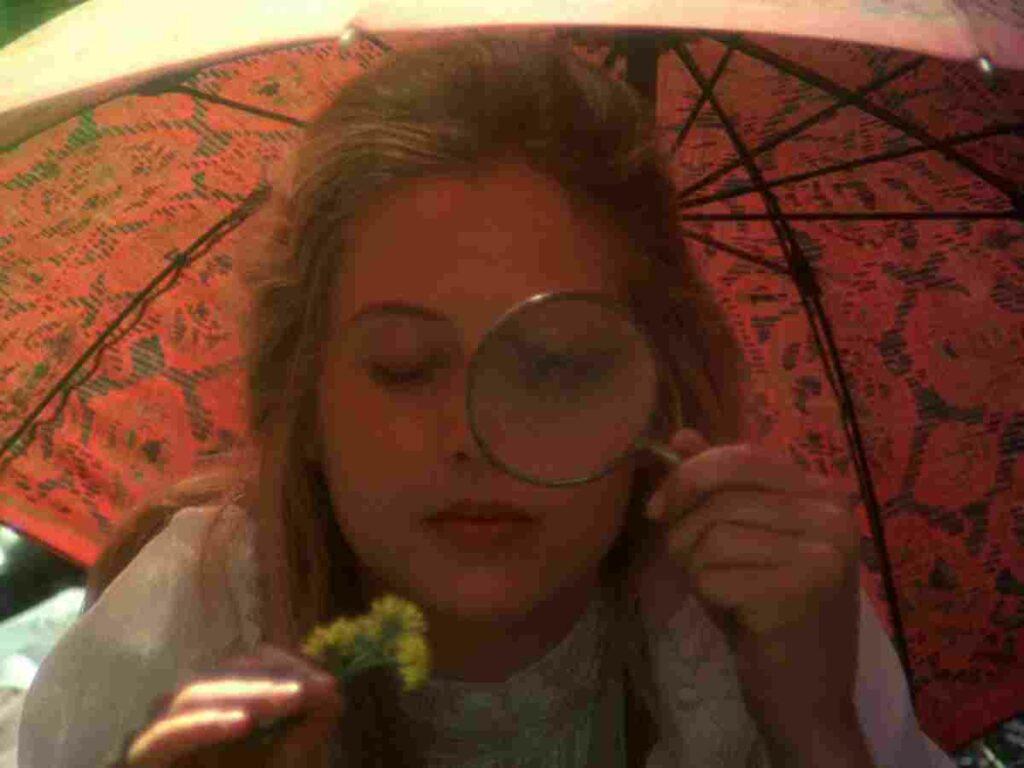A 1970s classic, Peter Weir’s Picnic at Hanging Rock (1975), has become a stylistic manual for an entire generation of filmmakers whose works have long since been influenced by its enigmatic make-up. Based on the 1967 novel of the same name, the film is an account of the disappearance of a party of schoolgirls and their teacher on St. Valentine’s Day 1900 during an outing at the eponymous rock.
A touchstone piece for the Australian new wave, the film propelled the national film industry onto the global stage. Chronicling the ill-fated trip, the aftermath of the disappearances, and the turmoil that results at the Appleyard School, the tale has, over time, become somewhat of an urban legend. Countless films owe a marked debt to the film’s schema of measured ambiguity. The possibility of it not being entirely fiction still tugs at the back of people’s minds.
The book had opened with the ominous declaration that it should hardly be of any concern whether the story is fact or fiction since the people in it are of a time long past. The sensation of foreboding elicited by said declaration permeates through and informs the account that follows.
The film opens at Appleyard School on St. Valentine’s Day — the day of the picnic. Preparations are underway for an afternoon of picnicking. There’s an oppressive air to the establishment and an undercurrent of hushed sexuality that’s written large over the film. Amidst the natural landscape, the school, with its imported green and peacocks, sticks out as an incursion owing to the order that it imposes upon the girls and the land around it. What ensues as a result is a clash between two irreconcilable ideologies: the untamed Australian wild and corseted Victorian institutions, and one of them is about to be turned upside down. Parasols are only suited for a certain light.
Among cinema’s most singularly tantalising sites, the 1000-year-old titular outcropping is the eroded remnants of an extinct volcano in the Australian bush. It rises out of the landscape like a primordial fortress. The site was historically used by the indigenous aboriginal people, who were the rock’s overseers, for sacred rituals and initiation rites.
Interestingly, even the aboriginals avoided venturing near the rock’s summit, which they believed to be inhabited by evil spirits. The thread of pagan mythology pervades the rock’s being all through the film, and submits it as a site where strange phenomena come to pass and people sometimes disappear.
At last, the party arrives at the rock. The excursion is a chance for the girls to kick up their heels and offers a day away from the tightly reigned conduct of the school. The alluring expanse of hanging rock and its accord with the insubordinate natural world lend a fitting antithesis to the rigid mandate of the school. At first, the scene of the picnic appears to unfold unceremoniously. But sometime during the afternoon, the watches stop. A mysterious haze takes over the lot. Four of the girls decide to break off from the party and climb the rock.
As the girls walk amongst it, the rumbling sounds of the earth announce the rock as an overpowering, almost pulsating organism. Full of caverns and corridors, it’s a sanctuary of secrets. Some time passes before the girls collapse and fall asleep below the summit. Everyone on the picnic spot down below is apparently asleep as well. Everyone except Miss McCraw, who senses something strange about the place.
The girls awaken after a while, and three of them, seemingly under the pull of some unseen force, walk into one of the rock’s many crevices. Edith tries to call out to them in vain and flees the rock in terror. The girls are never seen again.
“Something terrible has happened,” a teacher informs Mrs. Appleyard. Three of the girls, along with Miss McCraw, have gone missing. No one saw Miss McCraw leave the picnic spot, and the search at the rock yielded no trace of her or the girls. Unrest spreads among locals about the mystery and the school. A horde of speculation grips the townsfolk of Woodend.
The film heightens dread by sidestepping narrative transparency. Weir is ever-so mindful of what we see and how we see it. Point of view is critical here. A seemingly trivial detail or a throwaway statement might hold the key to the mystery. There are red herrings every which way. Nothing can be ruled out, yet none of the explanations are necessary.
Maybe it’s all a loose conceit for sexual awakening in view of the rock’s numerous phallic crests and vaginal orifices. Or maybe the ideal course of action when dealing with stifling repression is to vanish off the face of the earth altogether.
The unanswered questions deepen the mystery rather than diffuse it. This overall looseness is not a case of duplicity on Weir’s part; rather, it’s the underlying basis that lends the film its potency.
The tyrannical rein on burgeoning passions by grown-ups and the youthful disillusionment that it spawns are perfectly at home in the coming-of-age genre. The school’s headmistress, Mrs. Appleyard, as is genre tradition, is a dried-out, androgynous figure in contrast with the ripe sensuality of the girls. She serves as an emblem of repression against the romantic ideals of her pupils. The indeterminate nature of the girls’ fate is principally in opposition to the school’s dogmatic ideals and imposed circumspection. A theme reminiscent of another Weir film, Dead Poets Society (1989). The disappearances cause a chink in the rhetoric of the milieu and bring about a bittersweet catharsis.
But binding the film to these genre signifiers — explicit as they may be — would be a disservice to its form. Sure, these signifiers help the viewer in identifying with the film’s milieu on the surface, but the pleasures of the film extend far beyond contrived generic and thematic conventions, something for which the viewer would be hard pressed to find any reference.
The artistic smarts of the film are that it doesn’t distil the drama with clearly emerging causes or readily identifiable solutions. At a time when cinema itself is being impaired by the outpour of mere storytelling, the film plunges itself into a metaphysical realm that’s hard for rationalists to swallow.
The ultimate revelation never comes. A few days pass before one of the girls is discovered unconscious on the rock. She has no recollection of what happened that afternoon on the rock. The narrative essentially implodes, not airing its tension with conclusive action but winding it deeper on the inside.
In 1998, Weir removed seven minutes from the film for a theatrical re-release, creating a shorter 107-minute director’s cut, making the film even more inscrutable for sceptics. The landscape swallows up the girls, and what remains are only discrete suggestions that might point to a possible solution. Edith later reveals that on her way back from the rock, she saw Miss McCraw at a distance, going up the rock in her drawers. She also mentions spotting a strange red cloud at the rock the afternoon of the picnic.
Weir’s cinematic rendering of the book evokes a sense of powerlessness in the face of natural forces, be they on the inside or out there. A stir comes to pass, and the reverberations linger in the air. All that remains after a while is an echo, like the fragmentary memory of the picnic that bookends the film. A reprise of what, after all, made the title of the story. A moment in time, a moment of innocence, with people whose lives were about to be changed forever.




